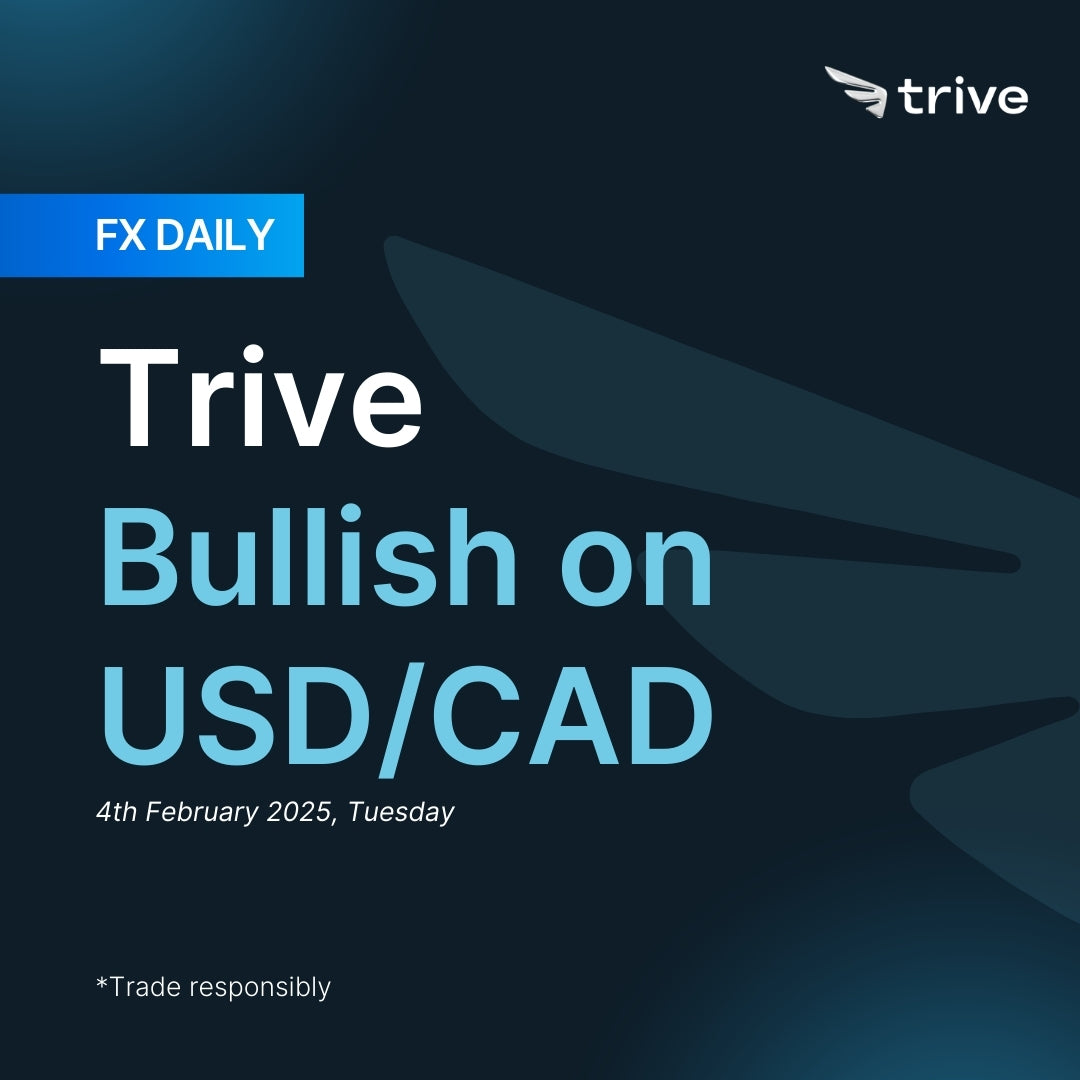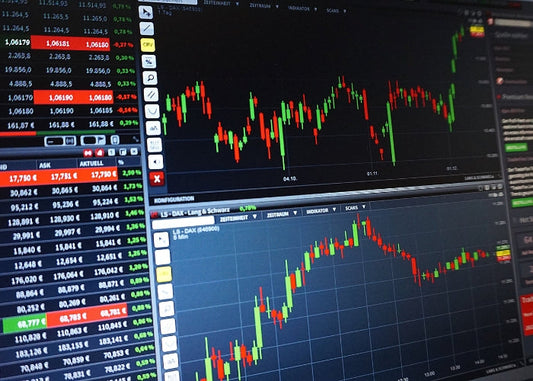FX Daily: Trive Bullish on USD/CAD

Although near-term tariff risks have somewhat eased, they still persist. Additionally, the U.S. economy remains stronger than Canada’s, coupled with policy divergence between the Fed and the BoC.
CAD: Tariffs Risk
The CAD continues to face bearish pressure, primarily due to the looming threat of US tariffs. Trump has confirmed plans to impose a 25% tariff on imports from Mexico and Canada, effective February 1, citing trade imbalances. On top of these external risks, the Bank of Canada recently cut its policy rate by 25bps to 3% and ended quantitative tightening. The BoC plans to gradually restart asset purchases in March to stabilize its balance sheet in line with economic growth. Despite these policy actions, the BoC's latest Monetary Policy Review saw inflation projections for 2025 and 2026 revised upwards, while growth forecasts were downgraded. However, these revisions do not account for the potential impact of tariffs.
Governor Macklem stated that inflation has remained near target in recent months, and that business and consumer expectations have largely normalized. However, he also warned that if significant and broad-based tariffs are imposed, Canada’s economic resilience could be severely tested. The removal of forward guidance reflects the heightened uncertainty surrounding US tariff threats, which are expected to put additional downward pressure on the CAD, as currency depreciation begins to affect policy decisions.
Although the BoC acknowledged that easing measures have supported household spending and that economic strength is expected to build gradually, concerns persist over the negative impact of a prolonged trade conflict. A potential trade war could harm economic activity and push inflation higher due to rising import costs. Some analysts anticipate that if the US follows through with 25% tariffs, the CAD could weaken further by 5-10%, although retaliatory measures by Canada could partially offset the initial impact. Overall, the uncertain economic outlook, exacerbated by tariff risks, suggests that the CAD will continue to face significant challenges in the near term.
USD: Tariffs Man
The baseline outlook for the USD remains bullish, primarily driven by trade policy developments under President Trump rather than the Federal Reserve’s stance. While the Fed kept rates unchanged at 4.25-4.50% in its January meeting, Powell’s comments and the statement carried a neutral-to-slightly-hawkish tone, reinforcing that monetary policy remains restrictive yet well-calibrated. Notably, the labor market was recharacterized as “solid,” and references to inflation progress were adjusted to highlight that inflation remains somewhat elevated. However, Powell emphasized the Fed’s independence and the uncertainty surrounding the new administration’s policies. He reiterated that there is no urgency to adjust the current policy stance, suggesting rates will likely remain on hold through the first half of the year despite some speculation about a potential March cut.
Additionally, the release of December’s PCE inflation data— the Fed’s preferred measure—indicates that inflation remains on track toward 2%. The core PCE deflator rose 0.2% month-over-month and 2.8% year-over-year, in line with expectations. Encouragingly, at three decimal places, the monthly increase stood at 0.159%, below the 0.17% average required over 12 months to achieve 2% annually. However, with significant uncertainty surrounding regulatory, tariff, fiscal, and immigration policies, the Fed is unlikely to take any chances, keeping monetary policy unchanged until at least June—further supporting the USD.
The primary catalyst for USD strength, however, is Trump’s renewed tariff threats. He confirmed plans to impose 25% tariffs on imports from Mexico and Canada, along with a 10% tariff on Chinese goods, effective February 1, citing trade imbalances and fentanyl concerns. While the market remains somewhat skeptical about full execution, past episodes suggest that Trump’s aggressive trade rhetoric can escalate quickly. If the tariffs are implemented, the currencies of targeted countries will face significant downside risks, while a failure to follow through could lead to broad USD weakness. Additionally, the risk of retaliation from Canada and Mexico could disrupt global trade flows, reinforcing USD’s appeal as a safe-haven asset.
Looking ahead, markets will focus on this week’s January Non-Farm Payrolls (NFP) and ISM data while closely monitoring any further tariff-related headlines from Trump. FX investors will scrutinize incoming US economic data and Fed commentary for clues about future policy moves while also factoring in Trump’s policies. However, with USD already overbought, further gains would likely require either stronger-than-expected economic data or a more hawkish stance from Trump. Overall, while the US economy remains resilient and the Fed continues to diverge from G10 central banks, which are leaning toward rate cuts, trade policy—specifically the "Tariffs Trade"—is expected to remain the primary driver of USD strength in the near term.
Current market context
The USD opened the day higher against most major currencies, except for the JPY, as markets reacted to weekend tariff news—25% on Mexico and Canada, and 10% on China. However, by the end of the U.S. session, Trump confirmed a 30-day delay on the proposed 25% tariffs for Mexico and Canada.
Meanwhile, Trump stated he would proceed with a 10% tariff on Chinese goods, calling it an "opening salvo," and hinted at potentially imposing a 10% tariff on the EU as well.
Overall, while near-term risks have somewhat eased, tariff concerns remain, especially as Trump has yet to speak with Xi, and the tariffs are set to take effect in just over five hours.

Disclaimer
This material is provided for informational purposes only and does not constitute financial, investment, or other advice. The opinions expressed in this material are those of the author and do not necessarily reflect the views of Trive International. No opinion contained in this material constitutes a recommendation by Trive International or its author regarding any particular investment, transaction, or investment strategy. This material should not be relied upon in making any investment decision.
The information provided does not consider the individual investment objectives, financial situation, or needs of any specific investor. Investors should seek independent financial advice tailored to their individual circumstances before making any investment decisions. Trive International shall not be liable for any loss, damage, or injury arising directly or indirectly from the use of this information or from any action or decision taken as a result of using this material.
Trive International may or may not have a financial interest in the companies or securities mentioned. The value of investments may fluctuate, and investors may not get back the amount they originally invested. Past performance is not indicative of future results.
For more information about Trive International, please visit http://trive.com/int
Additional Information
Investing involves risk, including the potential loss of principal. Diversification and asset allocation strategies do not ensure a profit or guarantee against loss. The content in this material is subject to change without notice and may become outdated or inaccurate over time. Trive International does not undertake any obligation to update the information in this material.
By accessing this material, you acknowledge and agree to the terms of this disclaimer. If you do not agree with these terms, please refrain from using this information.
कोई टिप्पणी नहीं
Home
Trive
TriveHub





0 टिप्पणियाँ